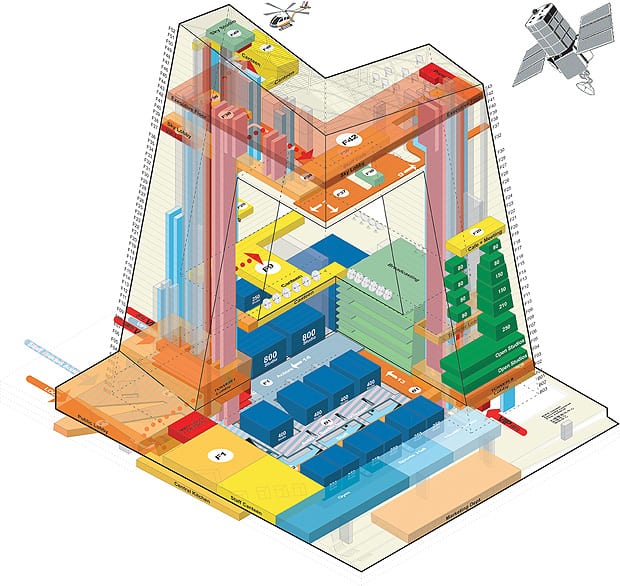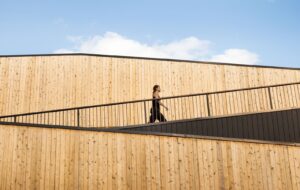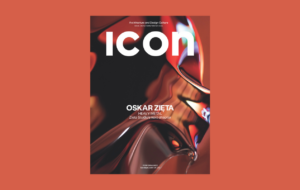
words Alex Pasternack
Was there a significant debate at OMA about taking this commission?
Very strongly and explicitly. And it was a very particular historical moment when the project started, just a few months after September 11, which had obviously exposed how the world and its agendas could suddenly change. We were invited to join the competitions for Ground Zero and CCTV at the same time. We were hesitant about both at first, and we thought very carefully about what each context would imply and unleash as its own unstoppable momentum. Ultimately CCTV was a situation that would be forward looking, that would be about a process of change, about a development of new constellations and new possibilities for architecture but also for a society. That seemed much more promising but also challenging for an architect, whereas the direction in the other case was pre-defined.
Even though we’ve been inundated with images of this building for half a decade, seeing the real thing is an eye-opening experience. What was your reaction?
The building is almost shockingly close to what we had envisioned. In a way that is not a surprise, but the result of the close collaboration we had with the client and our Chinese partners. But what is in a way more stunning is the effect that the building has now, given its volume and 3D object-ness in the city. It’s very big and it has a dominant presence. But there are moments where it becomes surprisingly small for what it is. Consider that CCTV has a little bit more floor area than the Burj Dubai. But we kept it within a strangely proportional relationship to its surroundings.
The jagged steel lines of the facade make it appear unfinished. How did that design come about?
The scaffolding of the city was our referential prototype, these green nylon meshes that I saw as conveying both solidity and temporariness at the same time. We also sought to make the facade merge with the colours of the sky. We spent two years looking at different techniques for how to treat the glass. What we produced was not a shiny reflective glass but more greyish, and is able to absorb the different qualities of light in Beijing – the “Beijing blur” as they call it.
Some have suggested that this will have the impact of a Trojan Horse, ferrying in larger shifts in Chinese society?
No one could ever expect architecture to be powerful enough to single-handedly change a society. We obviously need to see architecture in a broader context, in which it can play both a symbolic and functional role. I think these buildings are markers for new intentions. And here it is not a single horse, but a larger herd.
Do you think that the government and the client see them that way too, more than simply as monuments to power?
It’s undeniable that there’s a representative function to these buildings. But then again, I’m not sure that’s a bad thing. There is also a very strong desire here to go beyond the typical, the commercial, and to put a number of buildings on the map with very specific ambitions that obviously proclaim those ambitions. I don’t think there’ll be a period now when more and more of these projects are going to happen. But maybe that’s also not necessary. Maybe these buildings have already stimulated a debate that in itself will be the most important outcome of this whole period.
How has this changed OMA?
There had been many large-scale concepts before but not actual projects. CCTV presented a really dramatic challenge in terms of inventing a system and infrastructure that could handle those dimensions and complexities. Part of it was a redefinition of OMA’s own infrastructure. It was a period when we had just formed a partnership and transformed the office from a one person-led system into a group with more dispersed and shared responsibilities. For CCTV it was crucial to be able to conduct and decide things directly in China without always having to go back to the home base.
But obviously beyond all those logistical aspects, the project has already transformed the nature of projects that OMA is dealing with now, the nature of work that is brought to us and the way we are perceived. It really flipped the perception of an office that is capable of thinking conceptually to one that is capable of delivering one of the most complex pieces of architecture and engineering possibly done in the world so far.
















